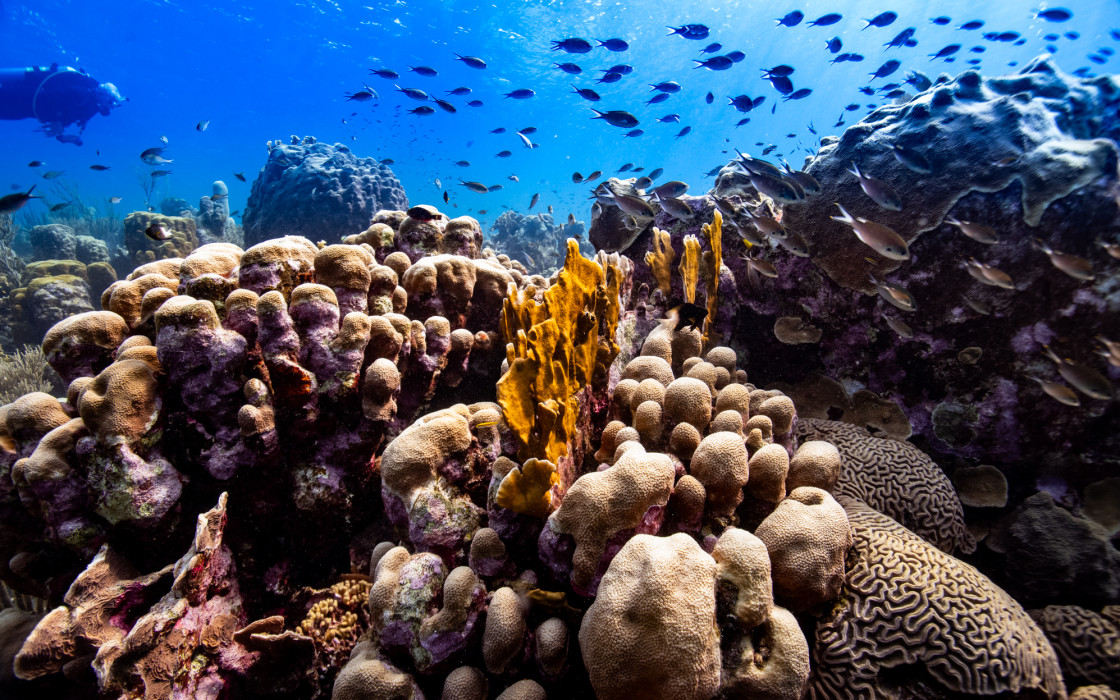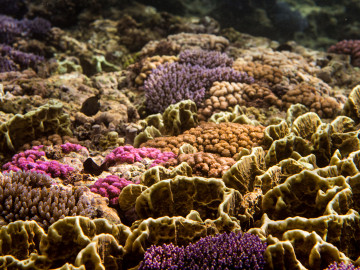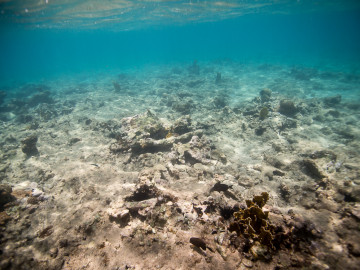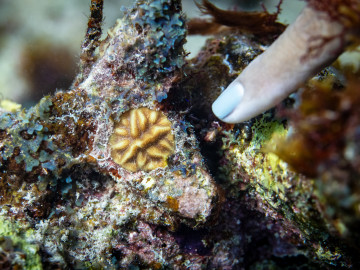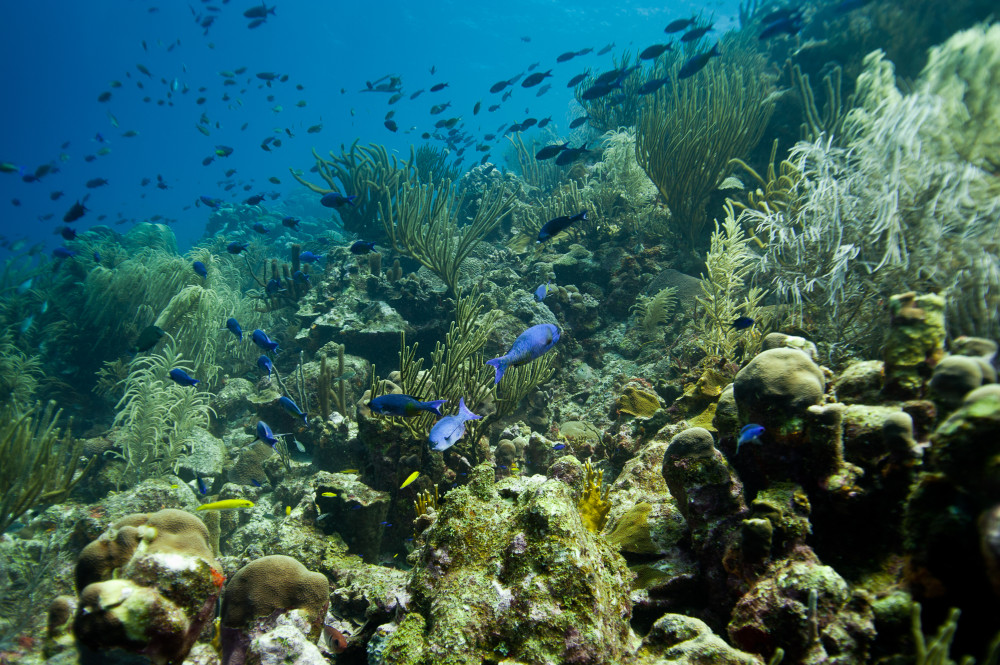The coral reef ecosystem
A coral reef: an ecosystem that corals build and maintain themselves.
Corals are animals. Most tropical corals live in colonies consisting of hundreds to thousands of interconnected tiny polyps. Together they build a skeleton of calcium carbonate - the framework of the reef. The corals thus form the basis for an entire ecosystem, they build the reef itself!
The livelihood of millions of people is based on healthy coral reefs. Fishing and tourism are important sources of income for local communities. Numerous fish species have their nursery here, including many that are exploited commercially. Coral reefs can absorb over 90% of the wave energy that hits the coast and are therefore a natural, self-sustaining coastal protection.
In total, coral reefs cover only an area of almost 300,000 km², but “healthy and intact coral reefs provide critical ecosystem services that amount to an equivalent of nearly US$10 trillion per year” (Rebuilding Coral Reefs - A Decadal Challenge).


